Categories
- Argentina
- Chile
- Antarctica
- Easter Island
- Falklands (Malvinas)
- Bolivia
- Peru
- Uruguay
- Paraguay
- Brazil
- Venezuela
- Colombia
- Ecuador
- Galapagos
- Panama
- Costa Rica
- Cuba
- Nicaragua
- Honduras
- El Salvador
- Guatemala
- Belize
- Mexico
- Latin American Xmas
Pages
- Street Art of Buenos Aires
- A week in Buenos Aires
- The Jesuit Missions in South America
- Contact Us
- Map of Central America
- First week in Latin America – October 2009
- Home Page
- Map of South America
Archives
- October 2011 (3)
- September 2011 (9)
- August 2011 (10)
- July 2011 (7)
- June 2011 (6)
- May 2011 (11)
- April 2011 (10)
- March 2011 (4)
- February 2011 (5)
- January 2011 (6)
- December 2010 (6)
- November 2010 (4)
- October 2010 (8)
- September 2010 (5)
- August 2010 (7)
- July 2010 (5)
- June 2010 (6)
- May 2010 (6)
- April 2010 (7)
- March 2010 (6)
- February 2010 (9)
- January 2010 (4)
- December 2009 (8)
- November 2009 (5)
- October 2009 (2)
San Agustín
25th December 2010
We arrived in San Agustín [9] at 8 am after an all night bus from Bogotá and within minutes Jorge from World Heritage Travel Office had organised 3 days of sightseeing of one of the important archaeological sites in Colombia.
.
The mysterious Agustiniana culture, which thrived between the 6th and 14th centuries around San Agustín, had already disappeared before the Spanish arrival. Inside flat topped burial mounds they left behind tombs with magnificent carved stone sculptures in the shapes of animals, warriors and human faces some mythical, some realistic. There are about 400 statues and tombs scattered in groups in the area. The statues range from less than a 1 meter to 7 meters high, and some were originally brightly painted in red, yellow and black. At the entrance to several tombs there is a carved figure of the deceased flanked by 2 guards. After some time the bones were removed and placed in urns for a secondary, deeper burial. Only tribal chiefs, shamans and priests were buried in this way.
.
On a jeep trip to some of the more remote sites, we passed small farms of sugar cane, bananas and coffee. It was most interesting watching the cane being crushed by hand and the juice being boiled to make blocks of solid raw sugar called panela which is used throughout Colombia as a sweetener.
.
The main sites we covered on foot over 2 days, walking through lovely green countryside passing villages, houses and farms. The people of San Agustín and the surrounding areas have to be some of the friendliest we have met in our travels.
.
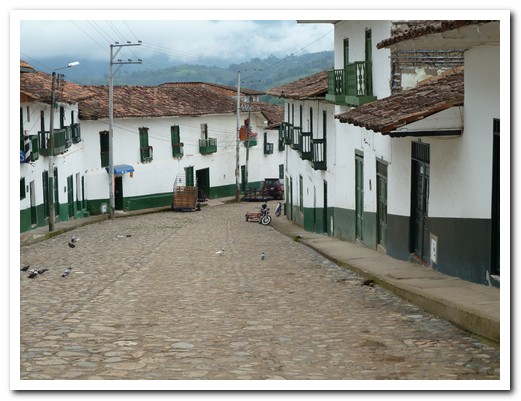
San Agustín´s oldest street
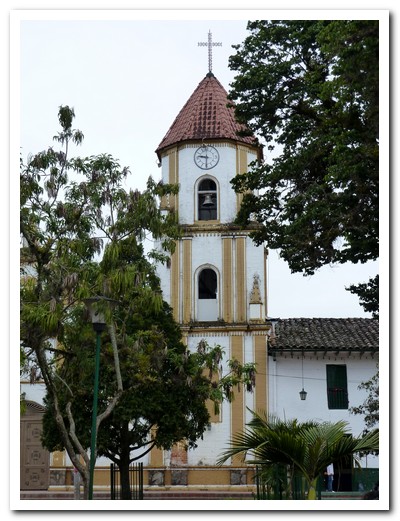
The local church
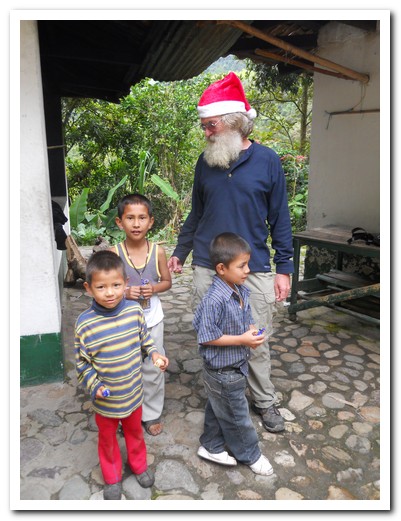
Santa with some village kids
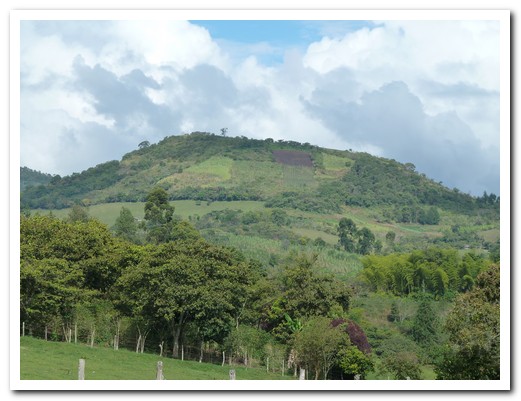
Huge man made burial mound
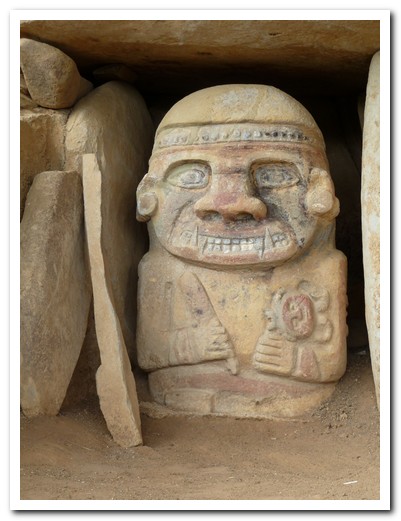
Statue depicting a boy sacrifice
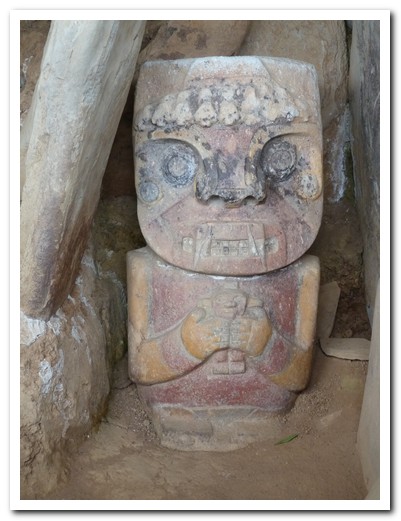
Girl sacrifice (drug induced wide eyes on statue)

Tomb entrance (originally deep under ground)
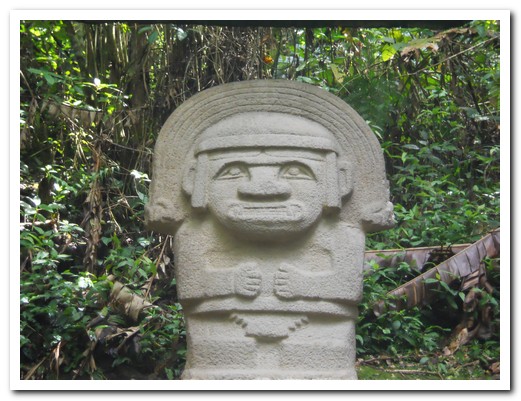
Lone statue in the jungle
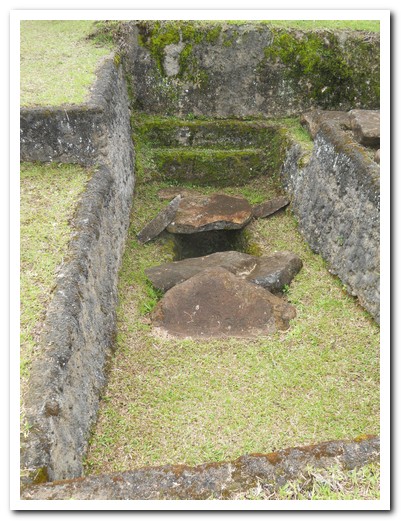
Primary burial tomb
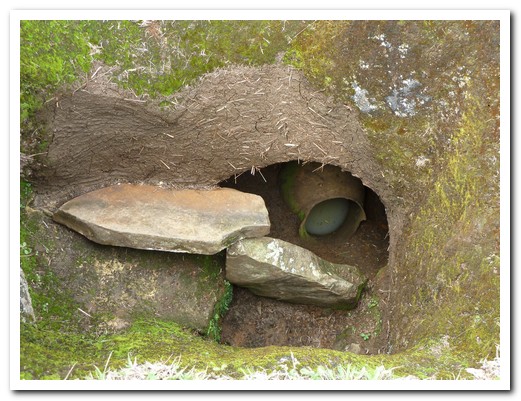
Secondary burial in ceramic pot
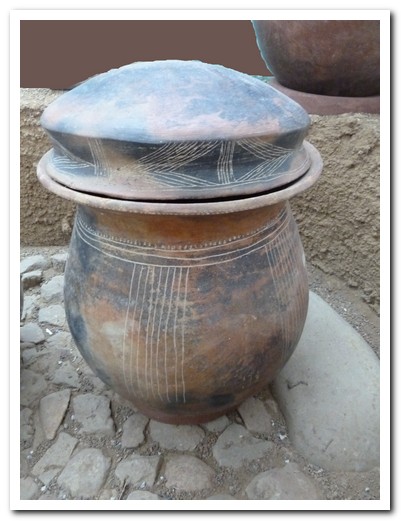
Funeral urn
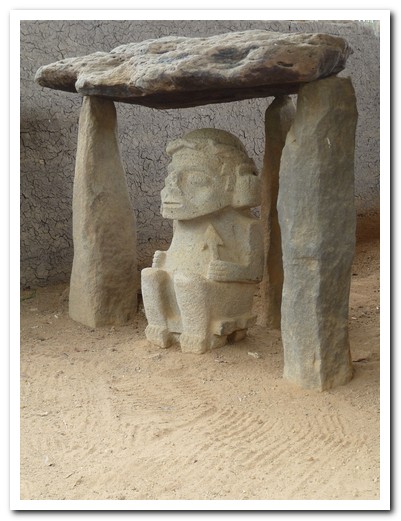
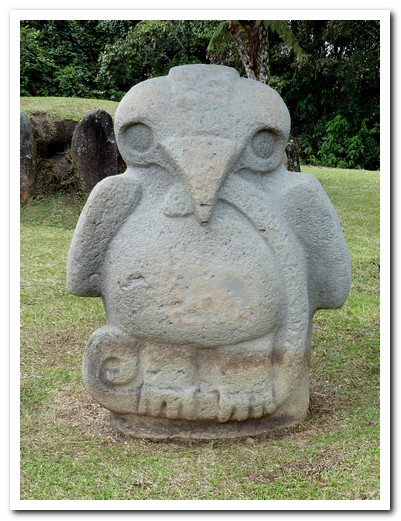
Eagle with snake
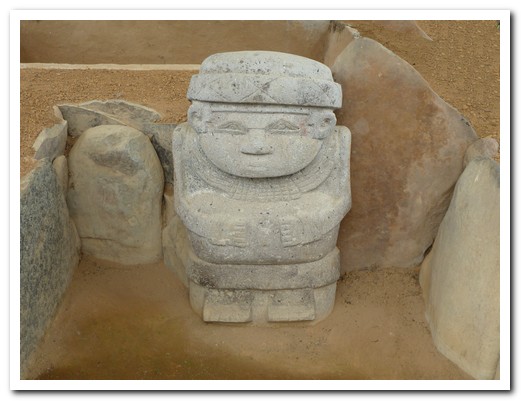
Pregnant woman
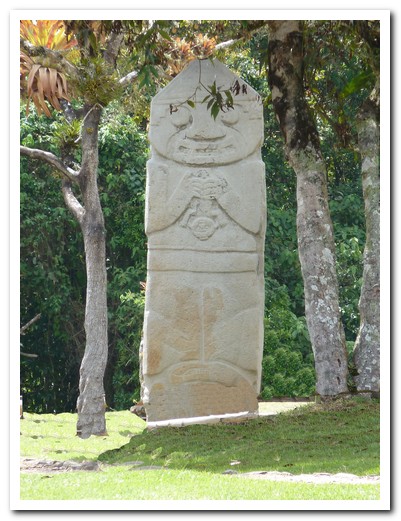
5 meter high statue
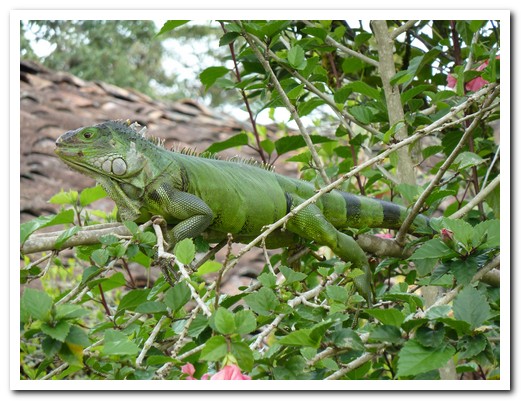
Iguana
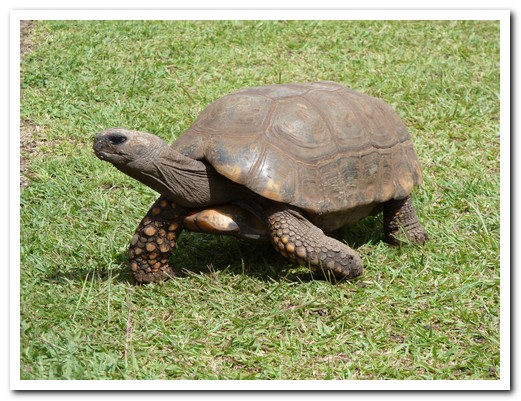
Tortoise
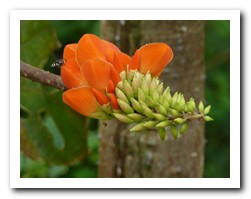 |
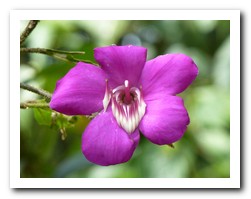 |
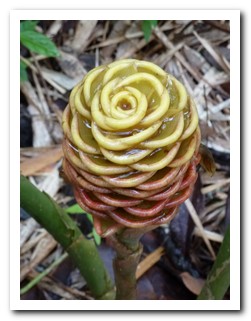 |
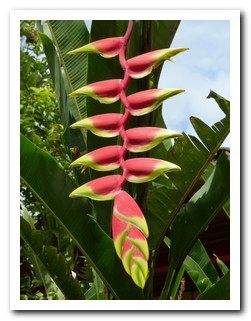 |
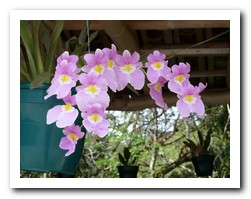 |
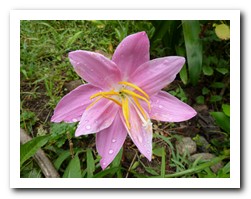 |
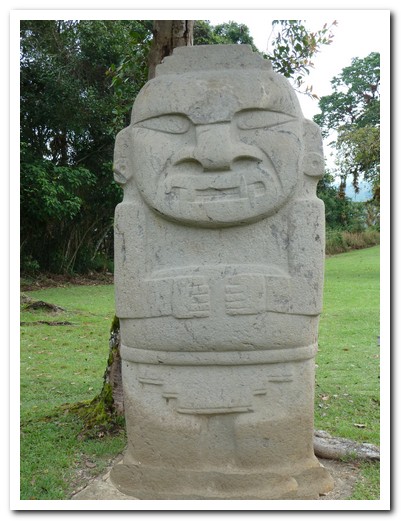
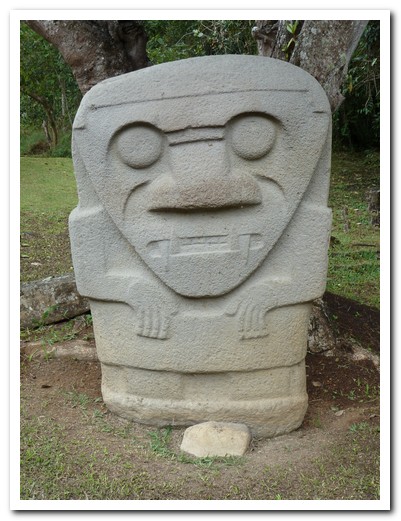
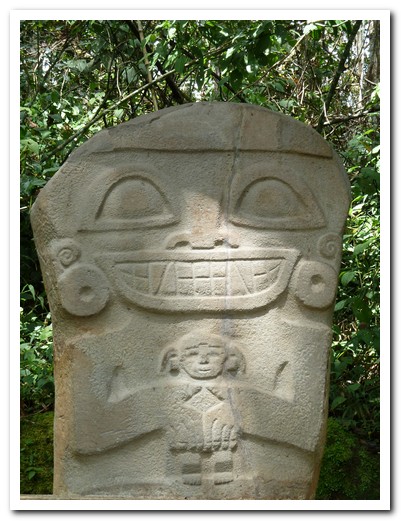
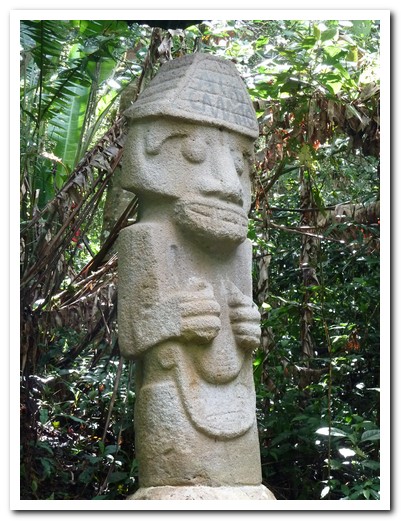
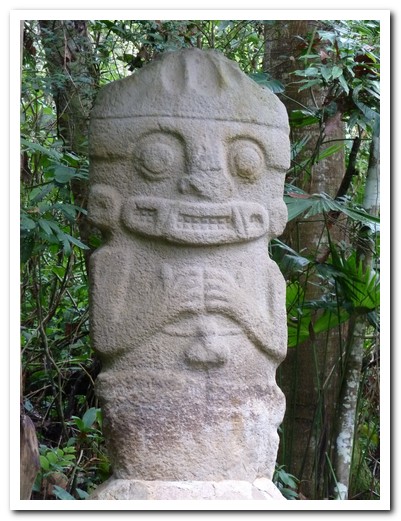
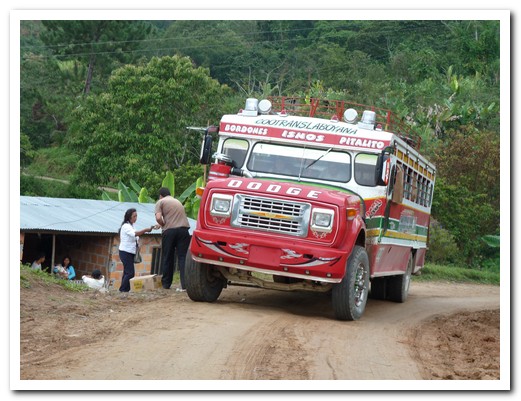
Brightly coloured ¨chiva¨ transports people and goods in the country areas
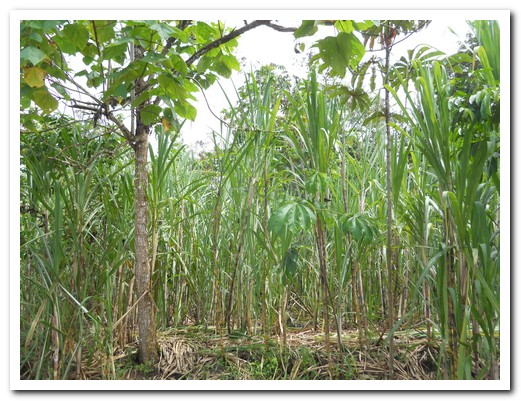
Sugar cane
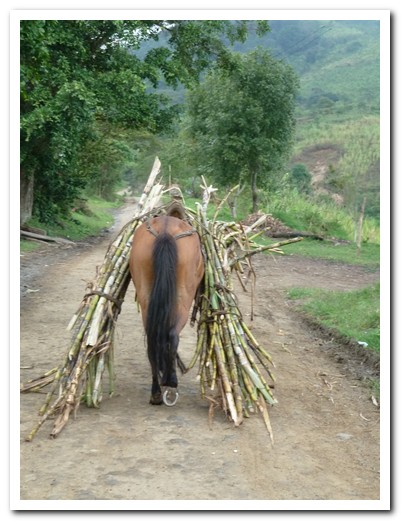
Mules carry the cut cane ...
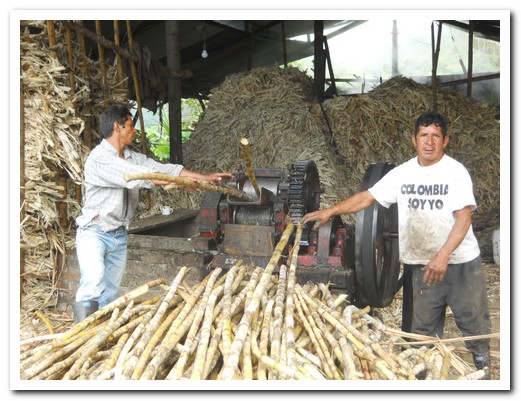
... to the factory for crushing
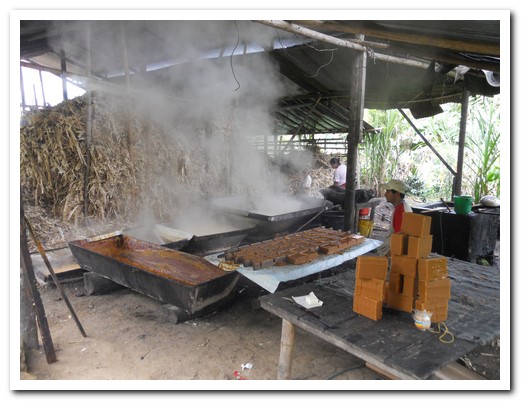
The boiling process to produce blocks of panela
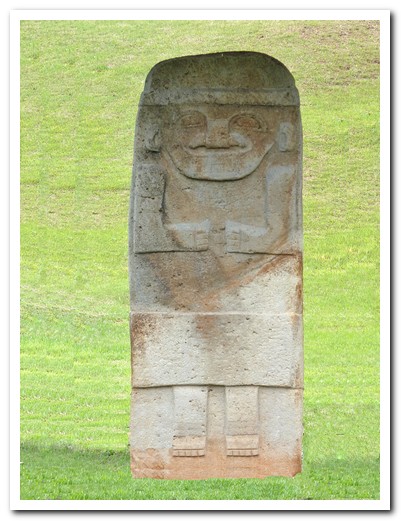
The tallest statue at about 7 meters
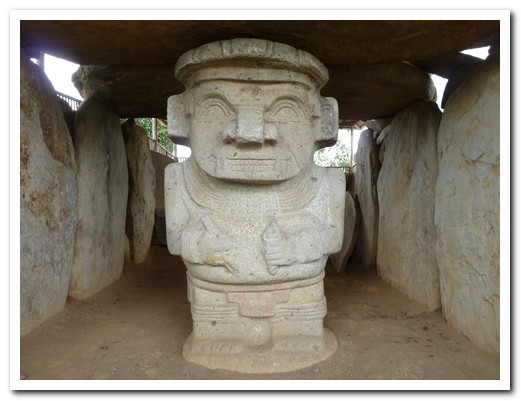
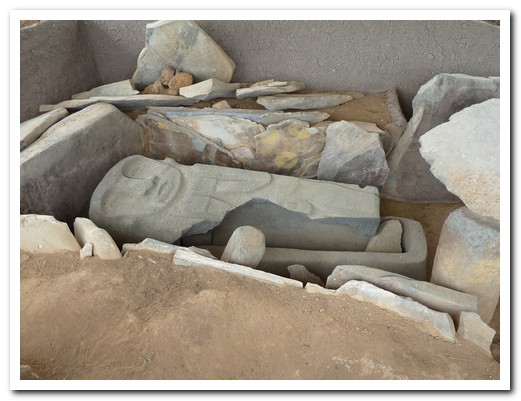
Sarcophagus
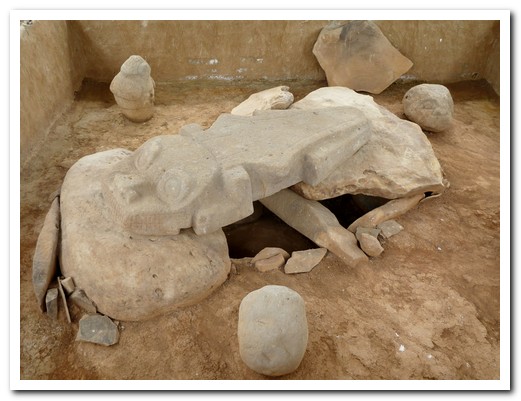
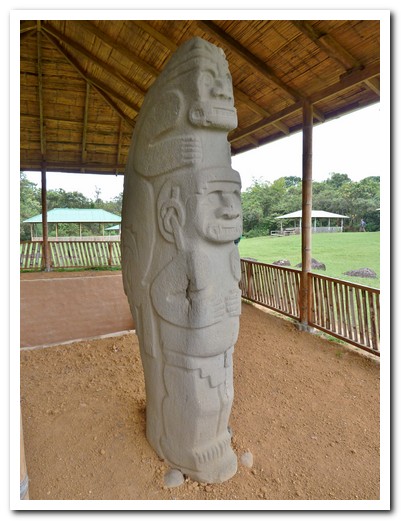
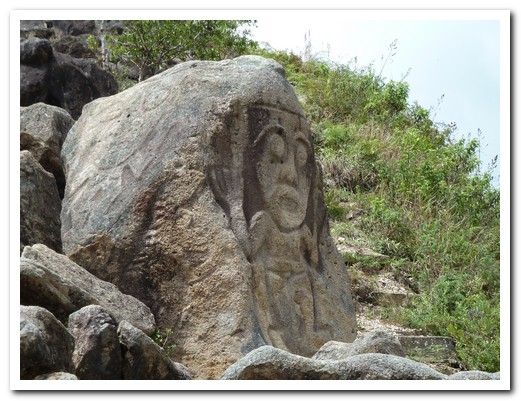
Unfinished statue
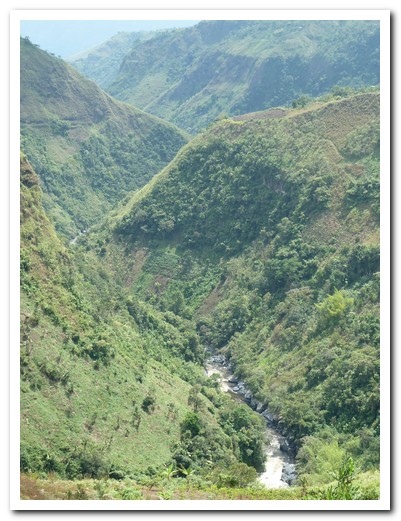
Rio Magdalena divids the east and central Andes of Colombia